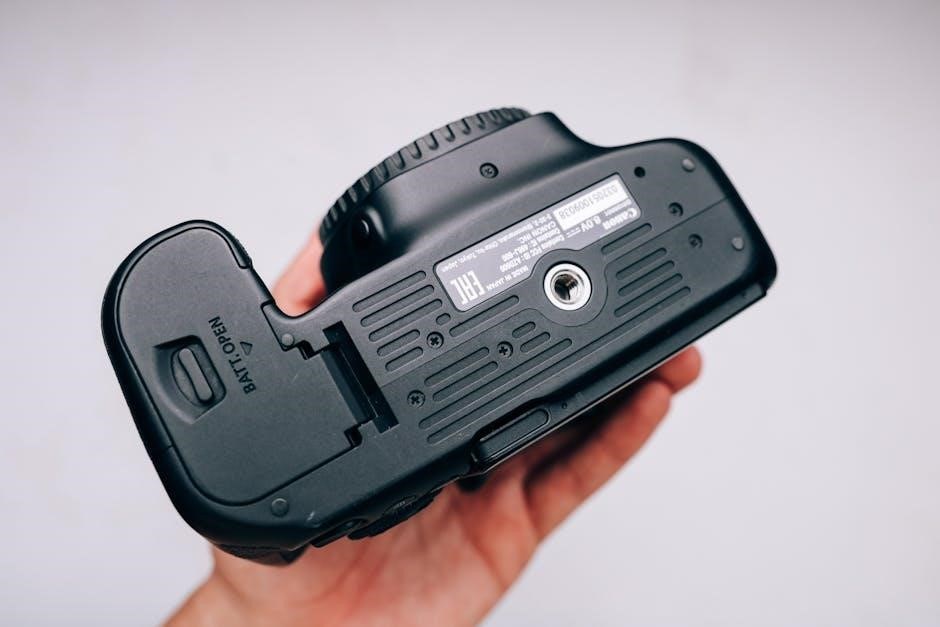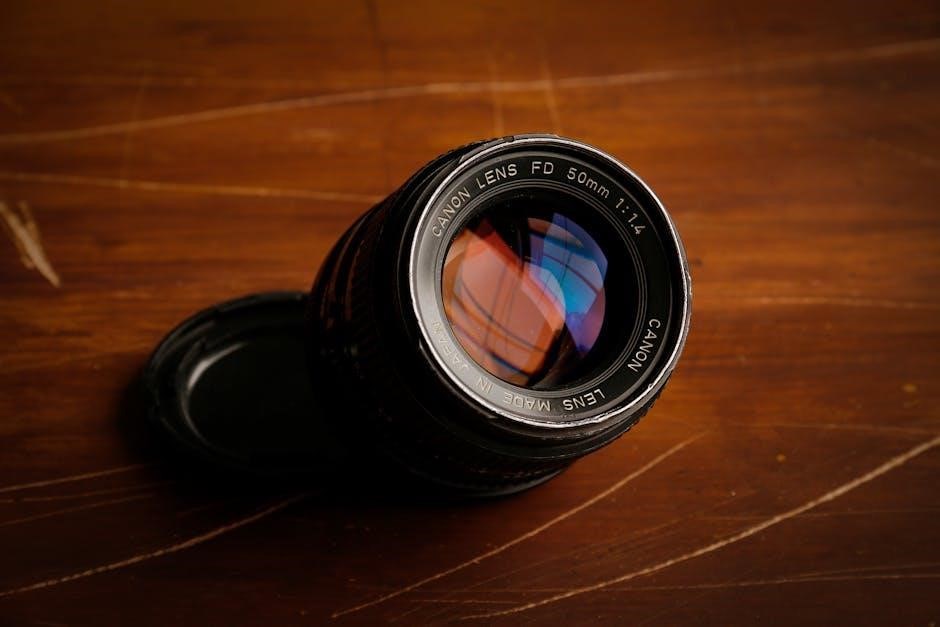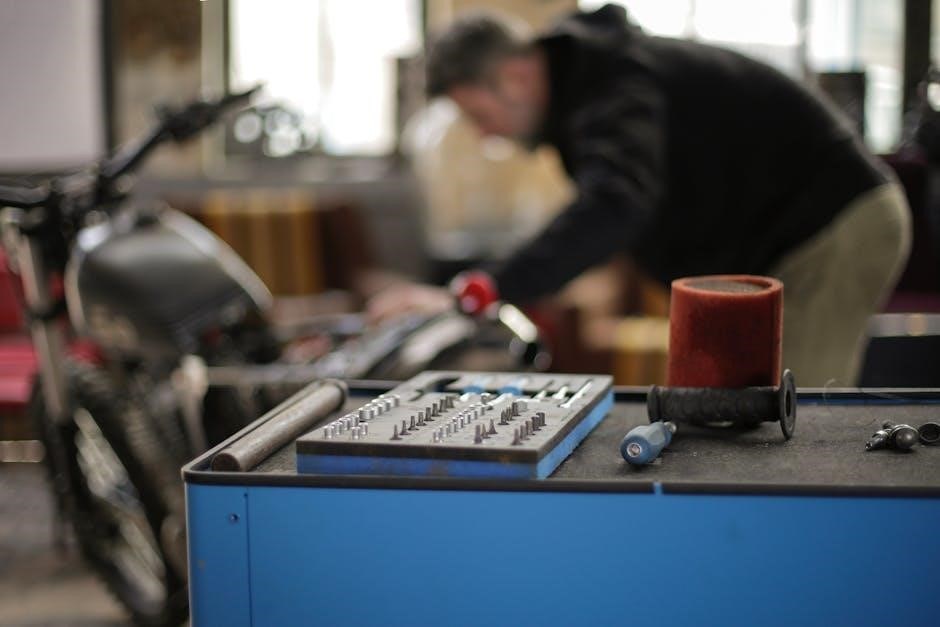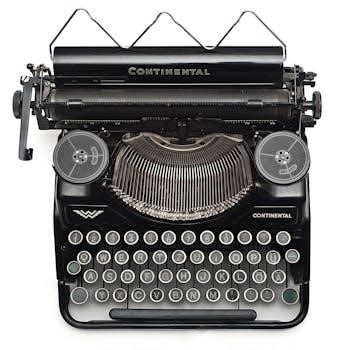The Shark Rotator Professional Lift-Away Vacuum offers versatile cleaning solutions with its upright and detachable canister modes. Its advanced features, such as LED headlights and a dual-roller nozzle, ensure efficient cleaning on various surfaces. This manual provides essential guidance for optimal performance and maintenance of the NV501 model, ensuring users maximize its capabilities while adhering to safety guidelines.
1.1 Overview of the Shark Rotator Professional Lift-Away Vacuum
The Shark Rotator Professional Lift-Away Vacuum is a versatile cleaning solution designed for both upright and detachable canister use. Its innovative design allows users to switch between cleaning modes effortlessly, making it ideal for various surfaces. The NV501 model features a detachable pod, LED headlights, and a dual-roller nozzle for enhanced cleaning efficiency. Introduced in 2013, this vacuum has become popular for its ability to handle carpets, hard floors, and above-floor areas with ease. Its lightweight and ergonomic design ensure comfort during extended cleaning sessions, while the advanced suction power delivers a thorough cleaning experience.
1.2 Importance of the Manual for Proper Usage
The manual is essential for understanding the Shark Rotator Professional Lift-Away Vacuum’s features and ensuring proper use. It provides step-by-step assembly instructions, maintenance tips, and troubleshooting guidance. Reading the manual helps users optimize the vacuum’s performance, preventing damage and ensuring safety. With detailed information on operating modes and technical specifications, the manual empowers users to maximize their cleaning experience while adhering to manufacturer recommendations. Regular reference to the manual ensures longevity and effective functionality of the appliance, making it a crucial resource for owners.
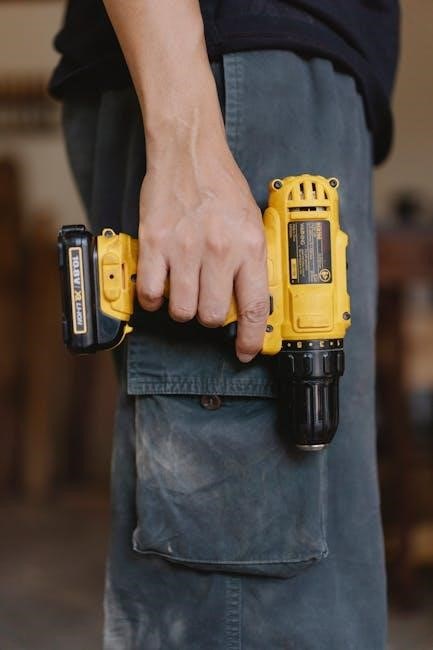
Structure of the Shark Rotator Professional Lift-Away Manual
The Shark Rotator Professional Lift-Away manual is a comprehensive guide organized into clear sections. It begins with an introduction, followed by product overview, assembly instructions, and detailed usage guidelines. The manual also includes maintenance tips, troubleshooting advice, and warranty information. Designed for easy navigation, it ensures users can quickly find the information they need to operate and maintain their vacuum effectively. Each section is concise and informative, making it an invaluable resource for optimal performance and longevity of the appliance.
2.1 Table of Contents in the Manual
2.2 Technical Specifications and Features
The Shark Rotator Professional Lift-Away Vacuum (NV501) features a powerful 120V motor, weighing approximately 15.6 pounds. It includes an upright mode for carpets and a detachable canister for versatile cleaning. The vacuum is equipped with LED headlights for improved visibility and a dual-roller nozzle for efficient debris pickup. It offers three speeds for customized cleaning and includes attachments like a crevice tool and upholstery brush. The dust cup capacity is 1.5 dry quarts, and the vacuum uses a washable pre-filter and foam filter for dust and allergen trapping. These specifications ensure robust performance across various surfaces.

Product Overview and Key Features
The Shark Rotator Professional Lift-Away Vacuum (NV501) is a versatile cleaning system combining upright and detachable canister modes. It features LED headlights for enhanced visibility and a dual-roller nozzle for effective cleaning on various surfaces.
3.1 Shark Rotator Professional Lift-Away NV501 Model
The Shark Rotator Professional Lift-Away NV501 is a high-performance vacuum designed for versatile cleaning. It combines upright functionality with a detachable canister, offering convenience for various surfaces. The NV501 features a powerful motor, LED headlights for better visibility, and a dual-roller nozzle for effective carpet and hard-floor cleaning. Its lightweight design and ergonomic handle enhance maneuverability. This model is part of the NV500 series, known for its durability and advanced cleaning capabilities. Refer to the manual for detailed instructions on assembly, operation, and maintenance to ensure optimal performance and longevity of the NV501.
3.2 Design and Build Quality of the Vacuum
The Shark Rotator Professional Lift-Away NV501 features a sleek and sturdy design, combining lightweight materials with robust construction. Its ergonomic handle and detachable canister provide ease of use, while the advanced engineering ensures durability. The vacuum is built to handle both carpets and hard floors effectively, with a focus on versatility and performance. The design incorporates user-friendly elements like LED headlights for better visibility and a compact footprint for easy storage. Overall, the NV501 exemplifies Shark’s commitment to quality and innovation, making it a reliable choice for everyday cleaning needs.
3.3 LED Headlights and Dual-Roller Nozzle
The Shark Rotator Professional Lift-Away Vacuum features LED headlights that illuminate cleaning paths, making it easier to spot dust and debris, especially in low-light areas. The dual-roller nozzle is designed for efficient cleaning on both carpets and hard floors, adapting to surface changes seamlessly. This combination enhances visibility and ensures thorough cleaning, making it ideal for tackling various cleaning tasks with precision and ease.

Assembly and Setup Instructions
Unbox and inventory all components, then follow the step-by-step guide for assembling the vacuum. Attach the wand, check for blockages, and ensure proper connections before first use.
4.1 Unboxing and Inventory of Components
Begin by carefully unboxing the Shark Rotator Professional Lift-Away Vacuum. Ensure all components, such as the upright unit, detachable canister, wand, hose, and various attachments, are included. Check for any damage or missing parts. Refer to the parts diagram in the manual to verify completeness. Organize the components neatly to ensure easy access during assembly. This step is crucial for a smooth setup process and to familiarize yourself with the vacuum’s design and accessories before proceeding with assembly.
4.2 Step-by-Step Assembly Guide
Start by attaching the wand to the hose and connecting it to the upright unit. Ensure the hose is securely locked into place. Next, align the detachable canister with the floor nozzle and snap it in until it clicks. Attach the dual-roller nozzle to the floor nozzle for improved suction and brushing action. Finally, connect the power cord and test the vacuum to ensure all components function properly. Refer to the manual’s diagrams for visual guidance and to confirm all parts are correctly assembled before first use.
4.3 Initial Setup and Calibration
After assembly, plug in the vacuum and ensure all settings are defaulted. Check the brush roll spins freely and adjust the height setting for your floor type. Test the suction control to ensure optimal performance. Verify the dustbin and filters are securely installed. Familiarize yourself with the LED headlights for visibility. Finally, perform a quick test run on a small area to confirm everything functions correctly. This calibration ensures the vacuum operates efficiently and effectively for various cleaning tasks.

Operating Modes and Functions
The Shark Rotator Professional Lift-Away Vacuum features multiple operating modes, including upright and lift-away configurations, offering versatile cleaning solutions for carpets, hard floors, and above-floor surfaces efficiently.
5.1 Upright Mode for Carpeted Surfaces
The Shark Rotator Professional Lift-Away Vacuum excels in upright mode for carpeted surfaces, offering powerful suction and a rotating brush roll for deep cleaning. The dual-roller nozzle adapts to various carpet heights, ensuring thorough debris pickup. LED headlights illuminate hidden dust and allergens, making it easier to spot and clean stubborn areas. This mode is ideal for large carpeted spaces, providing consistent performance and ease of use. Regular maintenance, such as checking for blockages and emptying the dustbin, ensures optimal functionality and prevents overheating, making it a reliable choice for maintaining clean carpets.
5.2 Lift-Away Mode for Versatile Cleaning
The Lift-Away mode transforms the Shark Rotator into a portable vacuum, ideal for above-floor cleaning. Detach the canister for lightweight, versatile use on stairs, upholstery, and tight spaces. Attachments like the crevice tool and upholstery brush enhance cleaning versatility. The mode is perfect for hard-to-reach areas, offering flexibility without compromising suction power. Transitioning between upright and Lift-Away modes is seamless, making it easy to tackle diverse cleaning tasks efficiently. This feature ensures comprehensive coverage, adapting to various cleaning needs with ease and precision.
5.3 Above-Floor Cleaning with Hose and Attachments
The Shark Rotator Professional Lift-Away Vacuum excels in above-floor cleaning with its detachable hose and versatile attachments. Use the crevice tool for tight spaces, the upholstery brush for furniture, and the dusting brush for surfaces. The hose extends your reach, making it easy to clean stairs, curtains, and high shelves. LED headlights on the nozzle illuminate hidden dust and debris. Attachments are easy to swap, allowing you to adapt to different cleaning tasks. This feature ensures thorough cleaning of hard-to-reach areas, enhancing overall versatility and efficiency for a spotless home.
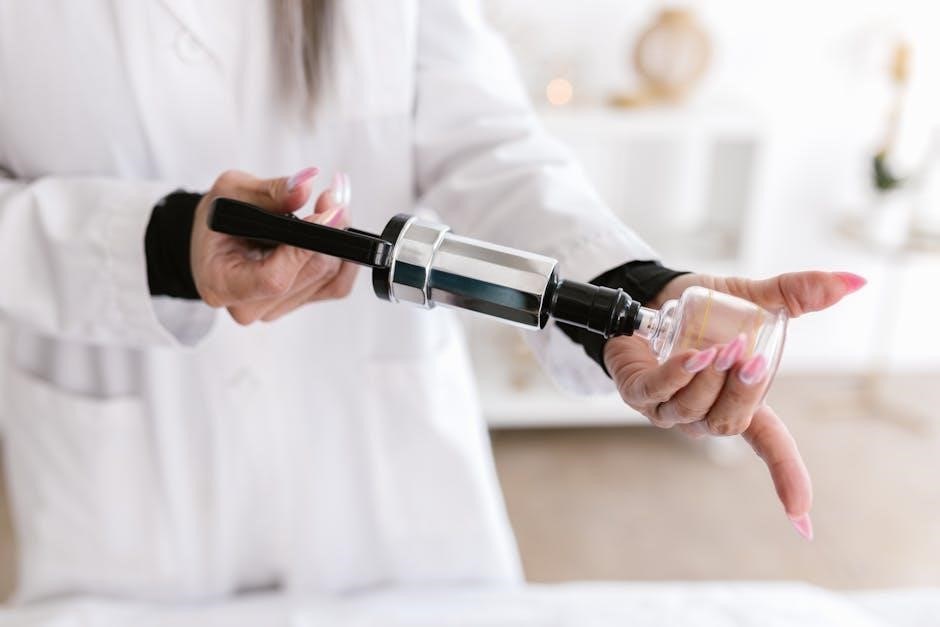
Maintenance and Cleaning Tips
Regular maintenance ensures optimal performance. Clean the filter, empty the dustbin, and check for blockages. Replace worn belts and parts as needed for efficiency.

6.1 Regular Maintenance Tasks
Regular maintenance is crucial for optimal performance. Clean or replace the filter as recommended to ensure proper suction. Empty the dustbin after each use and wipe it clean. Check for blockages in the hose, wand, or nozzle, and remove any debris. Inspect and replace worn or damaged belts to prevent motor strain. Additionally, clean the brush roll regularly to remove tangled hair or debris. Proper storage and handling will extend the vacuum’s lifespan. Refer to the manual for specific instructions on maintaining your Shark Rotator Professional Lift-Away Vacuum effectively.
6.2 Cleaning the Filter and Dustbin
Regularly cleaning the filter and dustbin is essential for maintaining your vacuum’s performance. The filter should be washed with cold water and allowed to dry completely before reinstalling. The dustbin can be emptied and wiped clean with a soft cloth. For tougher residue, mix mild soap with warm water and rinse thoroughly. Avoid using harsh chemicals to prevent damage. Clean the pre-filter and HEPA filter every 1-3 months, depending on usage. Replace the filter as recommended in the manual to ensure optimal suction power and longevity of the vacuum.
6.3 Replacing Belts and Other Wearable Parts
Regular inspection of belts and wearable parts ensures optimal performance and prevents damage. Turn off and unplug the vacuum before starting. To replace the belt, locate it near the brush roll, remove the old one, and install a new Shark-approved belt. Ensure proper alignment and tension for smooth operation. For other parts like brushes or wheels, refer to the manual for specific instructions. Replace parts as needed to maintain efficiency and longevity. Always use genuine Shark replacements for compatibility and reliability. This helps preserve your vacuum’s performance and warranty coverage.

Troubleshooting Common Issues
Address common problems like loss of suction or clogged hoses by checking for blockages and ensuring proper assembly. Refer to the manual for detailed solutions or contact Shark support for assistance if issues persist. Regular maintenance can often prevent these problems. Always follow the troubleshooting steps carefully to restore optimal performance and extend the life of your vacuum. If unresolved, professional service may be required to ensure proper functionality.
7.1 Loss of Suction Power
A loss of suction power in the Shark Rotator Professional Lift-Away Vacuum can often be resolved by checking for blockages in the hose, filter, or dustbin. Ensure the pre-motor filter is clean and the dustbin is emptied regularly. If the issue persists, inspect the vacuum’s intake for debris or hair, which may be restricting airflow. Regularly cleaning or replacing the filter can also restore suction power. For severe cases, refer to the manual for guidance or contact Shark customer support for assistance. Proper maintenance is key to maintaining optimal performance and extending the vacuum’s lifespan. Always follow the recommended cleaning procedures to ensure consistent suction power across all surfaces.
7.2 Jammed Brush Roll or Clogged Hose
If the brush roll is jammed or the hose is clogged, turn off the vacuum and unplug it for safety. Remove any visible debris from the brush roll, such as hair or string, and check the hose for blockages. Use a soft brush or a cleaning tool to clear the jam. Ensure all components are clean and free of obstructions before restarting. Regularly inspecting and maintaining these parts can prevent future issues. If the problem persists, refer to the manual or contact Shark customer support for further assistance. Proper care ensures smooth operation and longevity of the vacuum.
7.3 Motor Overheating or Strange Noises
If the motor overheats or unusual noises occur, immediately turn off the vacuum and unplug it. Check for blockages in the hose, filter, or dustbin, as these can restrict airflow and cause overheating. Empty the dustbin and clean or replace the filter if necessary. Inspect the brush roll for tangled debris or damage. Strange noises may indicate loose parts or worn components, such as belts. If issues persist, contact Shark customer support for professional assistance. Regular maintenance and proper usage can prevent such problems and ensure optimal performance. Always refer to the manual for detailed troubleshooting steps.

Safety Precautions and Guidelines
- Always unplug the vacuum before maintenance or cleaning to avoid accidental start-ups.
- Keep loose clothing and long hair tied back while operating the vacuum.
- Avoid vacuuming water or wet surfaces to prevent electrical hazards;
- Do not leave the vacuum unattended while it is in operation.
- Ensure children and pets are kept at a safe distance during use.
8.1 General Safety Information
Always read the manual before using the Shark Rotator Professional Lift-Away Vacuum to ensure safe operation. Use the vacuum only for its intended purposes and avoid ingesting dust or debris. Keep the area well-lit to prevent accidents. Regularly inspect the power cord and plug for damage. Never expose the vacuum to water or use it in wet conditions. Store the vacuum in a dry, cool place, out of reach of children. Follow all safety guidelines to maintain optimal performance and prevent potential hazards.
8.2 Usage Guidelines for Different Surfaces
For optimal cleaning, adjust the vacuum settings based on the surface type. Use the upright mode for carpets, ensuring the brush roll is enabled for deep cleaning. For hard floors, switch to hard floor mode or disable the brush roll to prevent damage. Delicate surfaces may require the use of the dusting brush or crevice tool. Regularly clean the brush roll to maintain effectiveness on various surfaces. Always refer to the manual for specific recommendations to ensure proper care and longevity of your Shark Rotator Professional Lift-Away Vacuum.
8.3 Storage and Handling Best Practices
Store the Shark Rotator Professional Lift-Away Vacuum in a clean, dry place to prevent damage. Avoid extreme temperatures and humidity. Regularly inspect and clean the brush roll and filters before storage. Wrap the power cord securely around the vacuum to prevent tangling and damage. Ensure all attachments are stored separately in a protective bag to maintain their condition. Proper handling ensures longevity and optimal performance of your vacuum cleaner.

Warranty and Customer Support
The Shark Rotator Professional Lift-Away Vacuum is backed by a comprehensive warranty. For inquiries, contact Shark’s dedicated customer service at 1-800-798-7398. Warranty details and support resources are outlined in the manual, ensuring hassle-free assistance for any issues.
9.1 Warranty Information and Coverage
The Shark Rotator Professional Lift-Away Vacuum is covered by a 5-year limited warranty, ensuring protection against defects in materials and workmanship. This warranty applies to both the motor and non-wear parts, providing users with peace of mind. For further details, refer to the manual or contact Shark’s customer service at 1-800-798-7398. Proper registration and adherence to maintenance guidelines are recommended to uphold warranty validity. Coverage includes repairs and replacements under specified conditions, ensuring long-term satisfaction and performance of the product.
9.2 Contacting Shark Customer Service
For assistance with your Shark Rotator Professional Lift-Away Vacuum, contact Shark customer service at 1-800-798-7398. Representatives are available Monday through Friday, 9 AM to 9 PM EST, to address troubleshooting, repair inquiries, or general questions. Additionally, visit the Shark support website at https://support.sharkclean.com for online resources, FAQs, and live chat support. Email assistance is also available through the website, ensuring comprehensive support for your vacuum needs.
9.3 Online Resources and FAQ Sections
The Shark website offers extensive online resources and FAQ sections to assist users with their Shark Rotator Professional Lift-Away Vacuum. Visit the support page to find detailed troubleshooting guides, maintenance tips, and product-specific FAQs. Users can also download PDF manuals for the NV500 series, including the NV501 model, ensuring easy access to information. Additionally, the website provides instructional videos and a comprehensive knowledge base to help users resolve common issues and optimize their vacuum’s performance.












